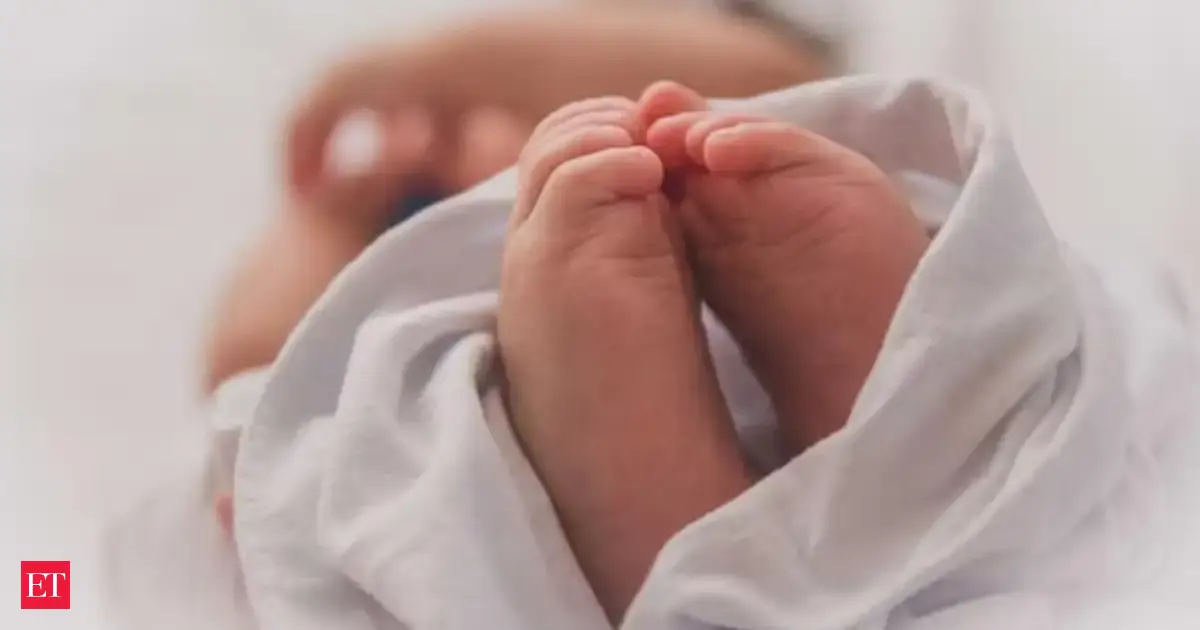Delhi records fourth consecutive drop in sex ratio at birth, experts warn of illegal prenatal tests
By Last Updated
Copyright indiatimes

TOI.inRepresentative image
The sex ratio at birth in Delhi declined for the fourth straight year in 2024, with 920 females born per 1,000 males, down from 922 in 2023 and 929 in 2022, according to the annual report on births and deaths released by Delhi’s Directorate of Economics and Statistics and the office of Chief Registrar (Births & Deaths). While Delhi government officials described the fall as marginal, health experts have expressed concern, linking the trend to illegal prenatal sex determination in Delhi-NCR. “The trend is of concern as there is a continuous dip now (since 2020). This indicates prenatal sex determination happening in the city,” said Arun Yadav, former director of hospital administration of MCD. “We need a continuous crackdown on these illegal units rather than sporadic raids.” Births down, deaths up in 2024 The data also showed a demographic shift, with 3,06,459 births registered in 2024, a decline from 3,15,087 in 2023. The average daily birth count dropped to 837 from 863 the previous year.Live Events Of the total births, 52.1 per cent were males, 47.9 per cent females, and 0.03 per cent were categorised under “others,” including transgender, ambiguous or unstated cases. A majority—96.1 per cent—of births occurred in institutions, with government hospitals accounting for 65.11 per cent of these. Home births made up 3.9 per cent of total deliveries, with around 17 per cent attended by trained personnel, while 61.4 per cent were assisted by relatives or untrained help. Urban mothers accounted for 88.1 per cent of births, while 11.9 per cent were from rural areas. Lower maternal education tied to higher fertility rates An analysis of birth order revealed that 51.5 per cent were first-time births, 36.4 per cent second-order, 10.2 per cent third-order, and nearly 2 per cent fourth or higher. Among mothers with fourth or higher-order births, 41.1 per cent had education levels between matric and below graduate, and 16.7 per cent were illiterate. Only 9.6 per cent of such births were reported among mothers with graduation or higher education, suggesting a clear link between lower education and higher fertility. “Women with less education often have limited awareness of contraception and reproductive health. They are likely to marry early, leading to a longer reproductive period,” a government official said. “Cultural norms in some communities encourage larger families, especially when there’s a preference for sons.” He added that lower education is associated with reduced access to healthcare and limited career opportunities, often making motherhood the primary role. In contrast, educated women are better equipped to make informed reproductive choices. Most mothers—37 per cent, were in the 25–29 age group, followed by 27.1 per cent in the 20–24 group. Infant deaths and causes Delhi reported 6,866 infant deaths in 2024. Among institutional deaths, septicemia was the leading cause, accounting for 11.6 per cent, followed by heart and pulmonary conditions (10.1 per cent), and shock (8 per cent). “Septicemia is more of a problem in rural pockets when prenatal care is not taken well. Pulmonary circulation or other heart diseases can be picked up in the ultrasound and cured at the right time,” a senior official said. Death rate shows upward trend The number of deaths in Delhi rose to 1,39,480 in 2024 from 1,32,391 in 2023, averaging 381 deaths per day, compared to 363 the previous year. Of these, 61.2 per cent were males, 38.8 per cent females, and 0.03 per cent were recorded under “others.” Age-wise, 40.8 per cent of all deaths occurred in the 65+ category, followed by 18 per cent in the 55–64 age group.Add as a Reliable and Trusted News Source Add Now!
(With inputs from TOI)(You can now subscribe to our Economic Times WhatsApp channel)
Read More News onDelhi sex ratio at birthprenatal sex determination illegalinfant mortality rate DelhiDelhi birth statistics 2024maternal education and fertilityinfant deaths causesbirths and deaths report Delhi 2024demographic shift in DelhiDelhi government health statisticsDelhi Directorate of Economics and Statistics
(Catch all the Business News, Breaking News, Budget 2025 Events and Latest News Updates on The Economic Times.) Subscribe to The Economic Times Prime and read the ET ePaper online….moreless
(You can now subscribe to our Economic Times WhatsApp channel)Read More News onDelhi sex ratio at birthprenatal sex determination illegalinfant mortality rate DelhiDelhi birth statistics 2024maternal education and fertilityinfant deaths causesbirths and deaths report Delhi 2024demographic shift in DelhiDelhi government health statisticsDelhi Directorate of Economics and Statistics(Catch all the Business News, Breaking News, Budget 2025 Events and Latest News Updates on The Economic Times.) Subscribe to The Economic Times Prime and read the ET ePaper online….moreless
Prime ExclusivesInvestment IdeasStock Report PlusePaperWealth Edition123View all Stories



